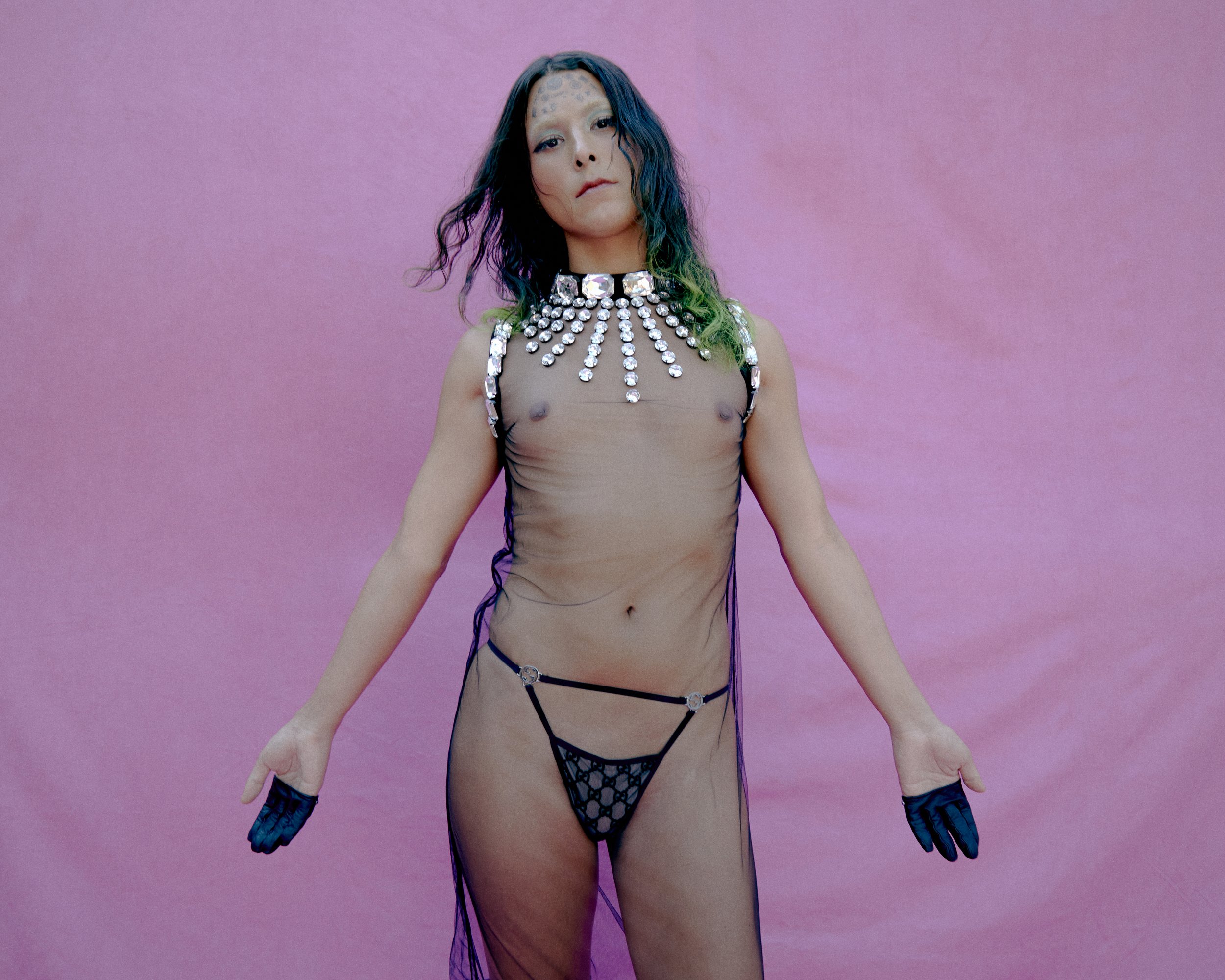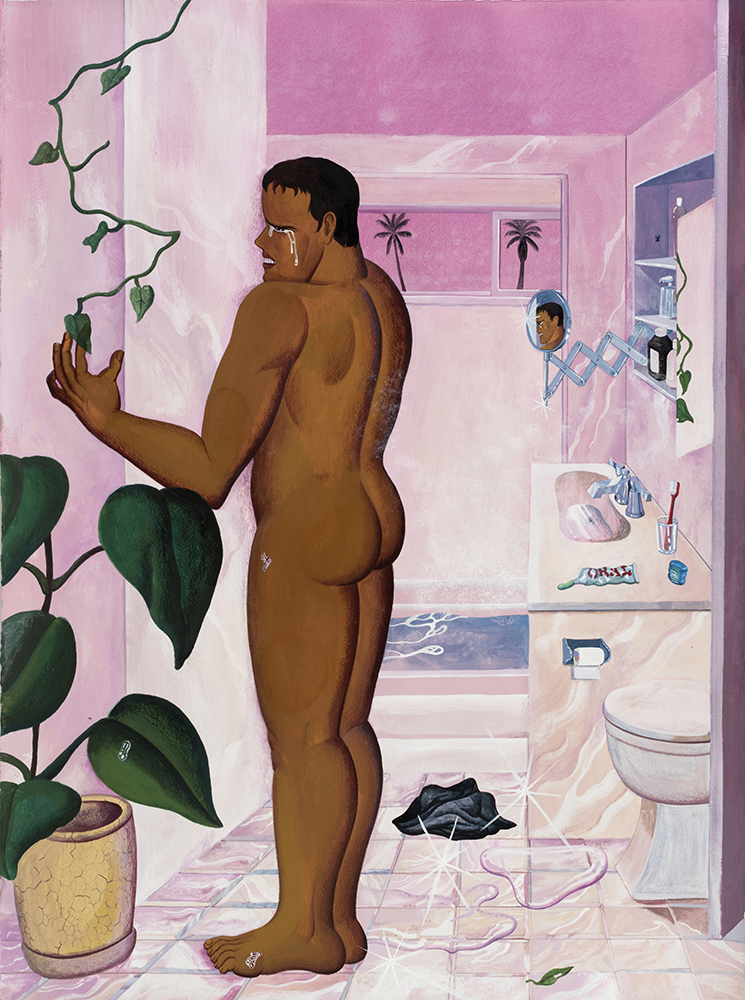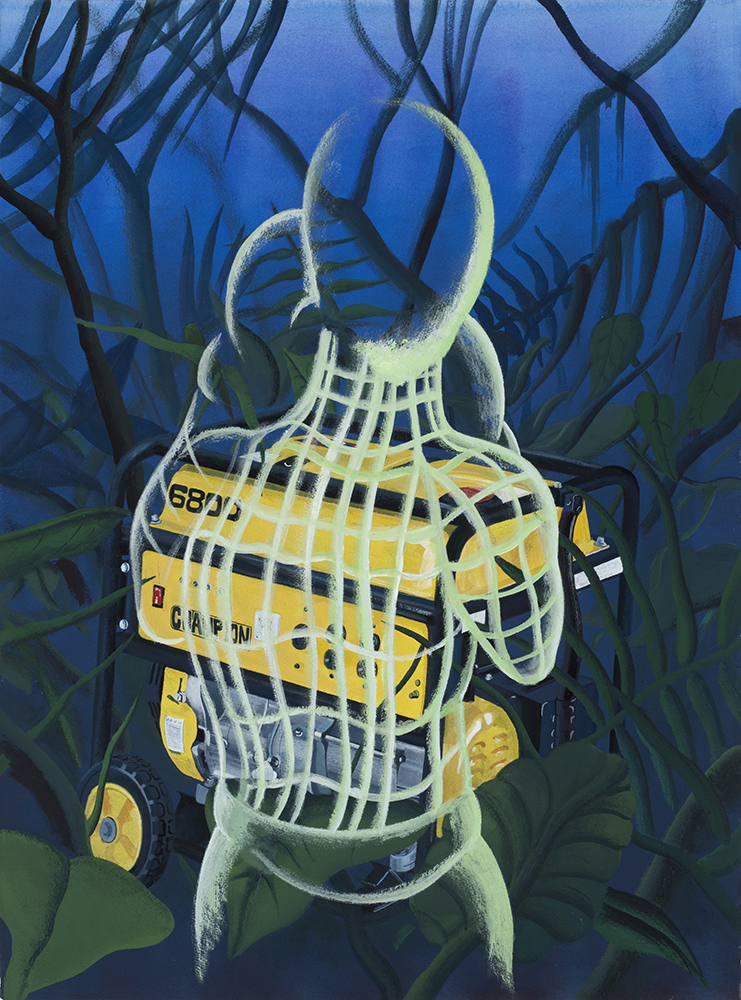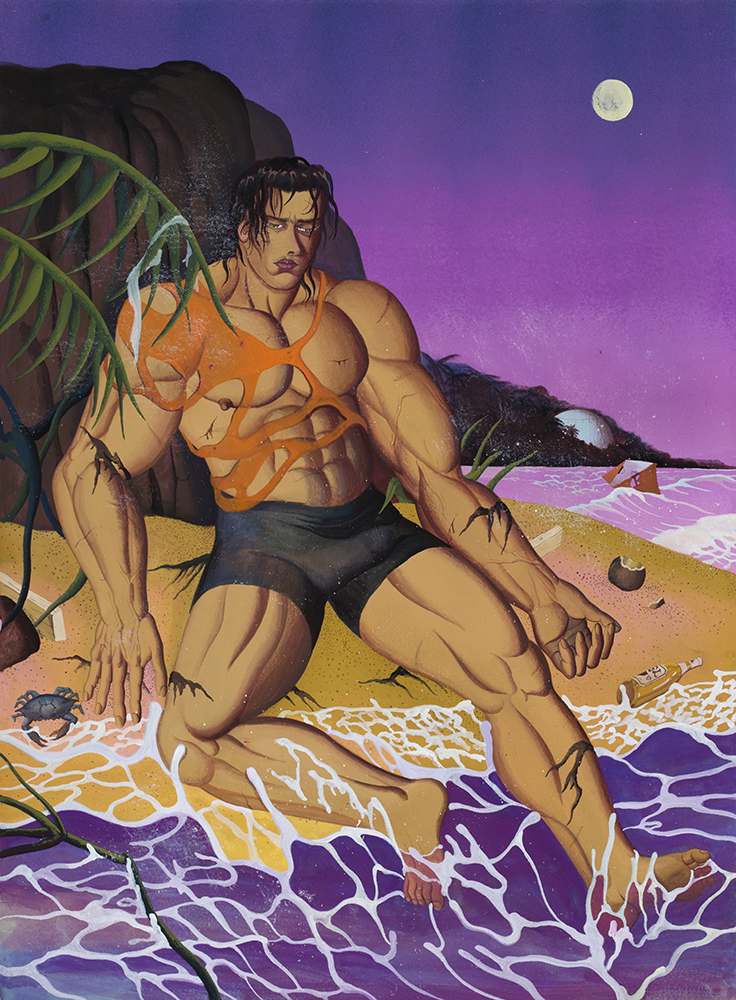Jade Guanaro Kuriki-Olivo, known by the pseudonym Puppies Puppies, is revolutionizing trans and Indigenous visibility through her critically-acclaimed conceptual works of sculpture and performance art. Despite a very genuine and personal embodiment within the work, an air of mystery once shrouded her identity as she initially insisted on a level of anonymity rarely exhibited by artists, particularly of her generation. In late 2017, however, this shifted with the very first reference to the artist’s gender transition taking place in her Green (Ghosts) installation at Overduin & Co. in Los Angeles. Kuriki-Olivo and her then-boyfriend lived in the gallery during the hours it was closed, leaving only traces of their existence during the hours it was open. Here, she taped two estrogen pills to the wall, pointing toward her gender-affirming course of hormone therapy—a subtle gesture that gently opened the door of visibility. Employing the mundane, everyday objects that surround her life is a hallmark of Puppies Puppies’ practice and readymades are one of her favorite ways to reference the art historical canon. An initial easter egg of visibility has since swung the door open to a state of consensual voyeurism in Nothing New, her current solo exhibition at the New Museum where the artist is occupying the Lobby Gallery with nearly constant access to her comings and goings via video surveillance, live stream access, and glass walls overlooking a recreation of her bedroom. Puppies Puppies also points to elements of her multi-ethnic indigeneity—Taíno on her father’s side and Japanese on her mother’s—with the inclusion of objects and spiritual practices that connect her disparate lineages in a form of what the exhibition’s curator, Vivian Crockett, refers to as a memoryscape. Crockett got cozy in bed for her interview of Puppies Puppies on the eve of the exhibition’s inauguration to discuss their creative collaboration. Read more.
ART REVIEW: Jonny Negron @ Chateau Shatto Gallery in Los Angeles
From afar, Jonny Negron’s paintings at Chateau Shatto are not unlike tastefully illustrated advertisements for some unnamed tropical paradise. Look closer at these picturesque scenes, though, and it becomes clear that “Small Map of Heaven” documents waters engulfed with trash, beachgoers undergoing trauma, and a faded pink bathroom as a site for tears.
The Puerto Rican born, Brooklyn-based artist references the delayed response to the destruction in Hurricane Maria’s wake. An abundance of flora envelops the gouache paintings. Although beautiful, these omnipresent plants swarm and tighten their grip on whatever is in their way, suggesting nature’s revanchist desires in an era of climate change.
Negron, who has a background in comic book illustration, cites Japanese woodblock prints, or ukiyo-e, as inspiration. In Generator, a submerged spectre faces a Champion generator on the ocean floor, peering at the one device, now useless, that could have saved it’s flesh and bones. Hints of the 18th-century artist Maruyama Okyo’s woodblock prints of yurei (ghosts) come to mind.
Like the apprehensive face in Paul Gauguin’s gouache painting Breton Girl By the Sea, the windswept shore and balmy night in Bonus reminds us that often no setting, no matter how idyllic, can brighten whatever internal issue eats at us. The cartoonishly-chiseled man, eyes focused nowhere, sits on the beach in a daze.
A man weeps in a cloying bathroom in To Live and Die in LA, grasping the same plants that have been present in the other waterlogged paintings as puddles of water sparkle on the tile floor. Los Angeles, too, experiences destruction--albeit from fires due to forest encroachment and rampant home-building.
Water is always present throughout “Small Map of Heaven”--although it can offer relief from the debris and destruction on land, it is also the source of such peril.
“Small Map of Heaven” runs from July 14th - September 1st, 2018 at Chateau Shatto (1206 S. Maple Ave, Suite 1030, Los Angeles, CA, 90015)
Liam Casey is a freelance writer, researcher and DJ from Los Angeles. In addition to being a contributor for Berlin Art Link, he also has a background in housing and urban planning, co-developing a think-tank on Los Angeles’ housing crisis. He is also a co-organizer and resident of the queer collective Bubbles.




